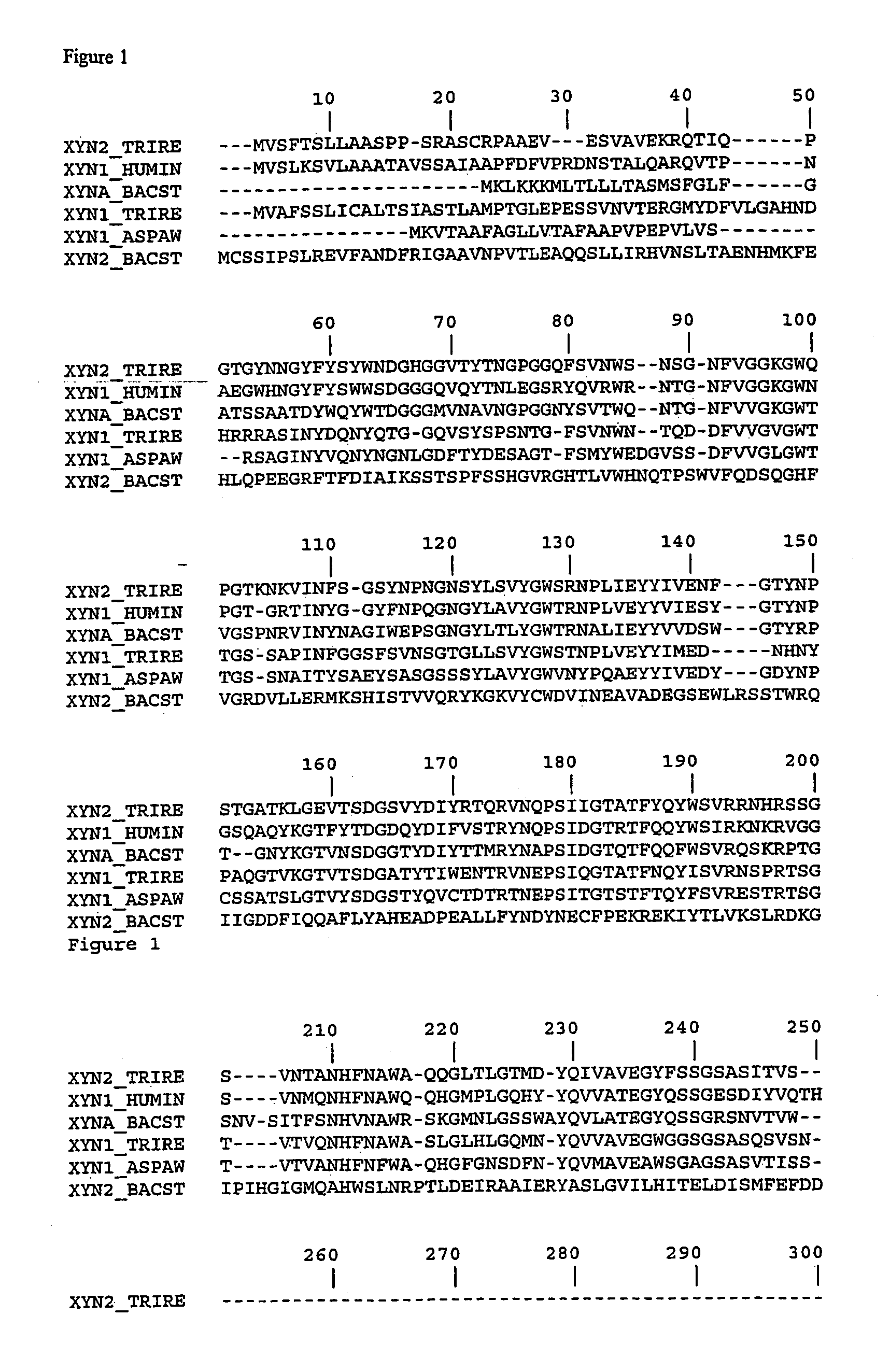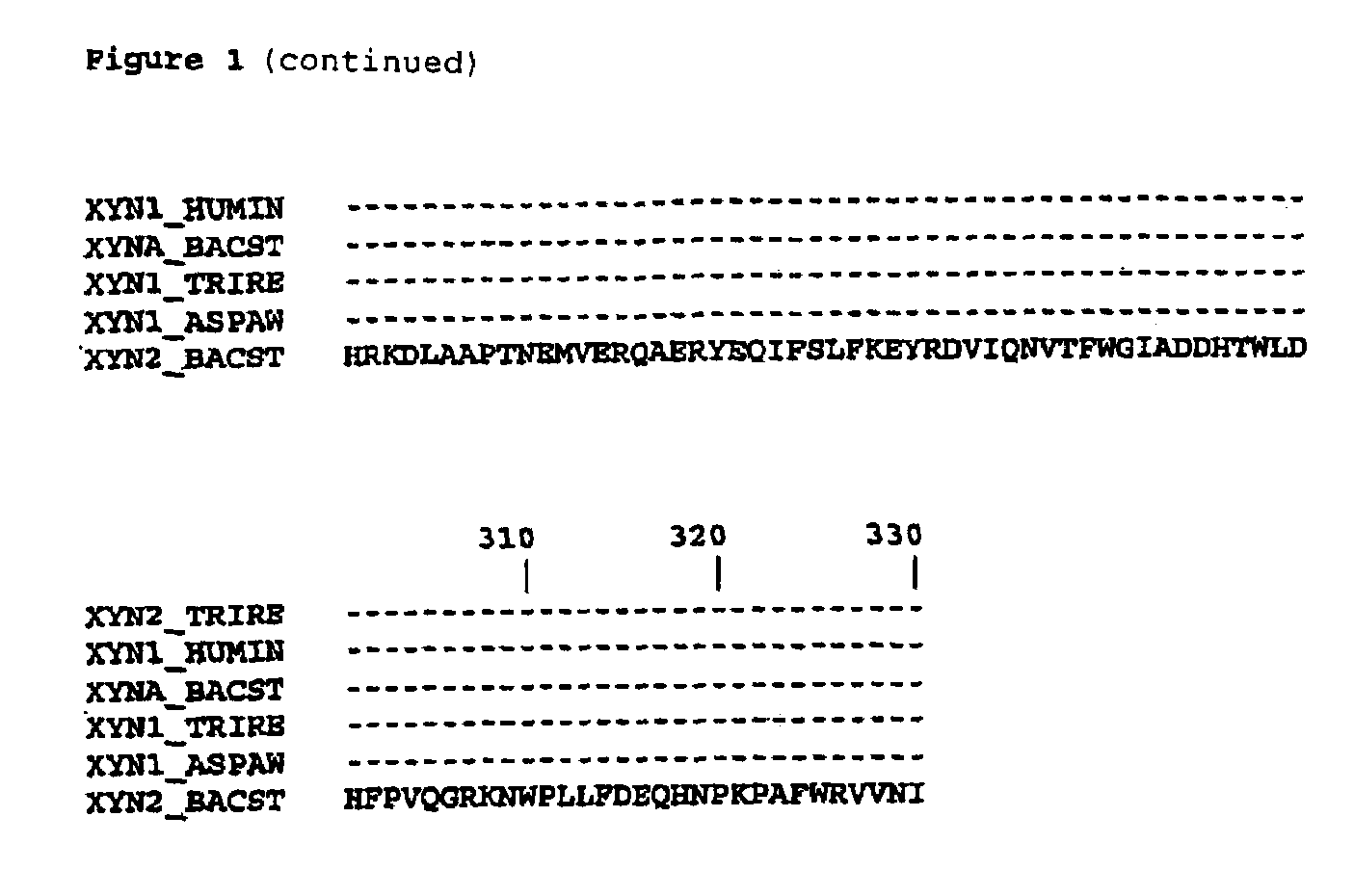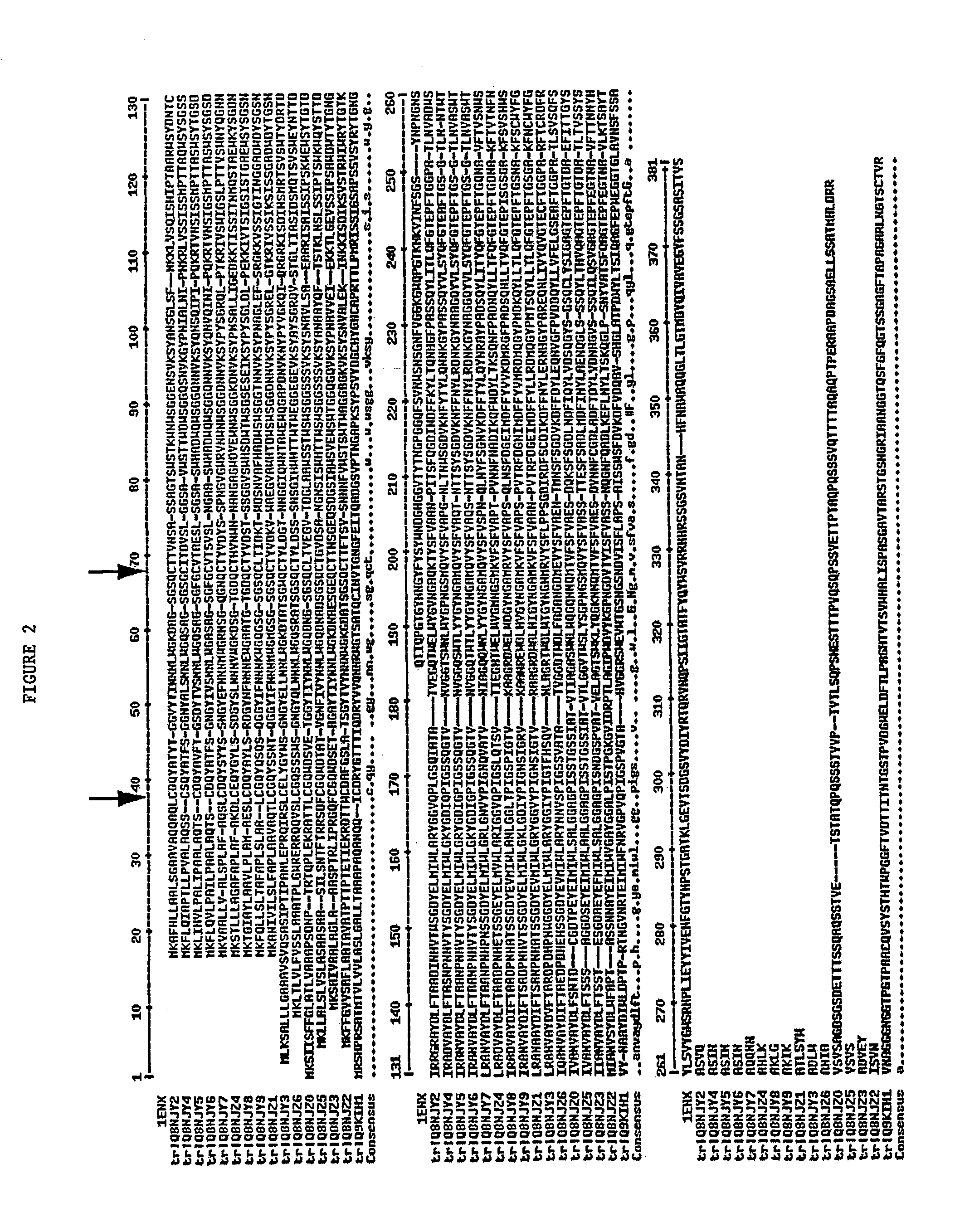Modified enzymes, methods to produce modified enzymes and use thereof
a technology of modified enzymes and modified enzymes, applied in the field of modified enzymes, can solve the problems of less effective xylanases than under normal conditions, difficult to produce enzymes in economically efficient quantities, and increase the cost of the process
- Summary
- Abstract
- Description
- Claims
- Application Information
AI Technical Summary
Benefits of technology
Problems solved by technology
Method used
Image
Examples
example 1
Plasmids Used for Xylanase II Expression and Mutagenesis Template
[0172]The open reading frame encoding Trichoderma reesei XYNII gene product was amplified by polymerase chain reaction (PCR) from the T. reesei cDNA library. XYNII cDNA was cloned into pKKtac (VTT, Espoo, Finland) or alternatively into pALK143 (ROAL, Rajamäki, Finland).
example 2
Site-Directed Mutagenesis for Generation of Mutant of Xylanase II
[0173]Expression vectors containing cDNA-encoding xylanase II as described in Example 1 were used as template in the stepwise site-directed mutagenesis in consecutive PCR amplifications. Synthetic oligonucleotide primers containing the altered codons for the mutations X-Y were used for insertion of the desired alteration into the native xylanase II primary amino acid sequence. By this approach the residues of sites 92, 93 and 144 of the wild-type enzyme mutants were generated to bind the loop N143-S146 of xynII to the neighbouring β-strand. Additionally, mutagenesis was performed to generate the mutations at sites 22, 65, 97 and 108 into the xylanase primary sequence. The oligonucleotide sequences used in the mutagenesis are shown FIG. 3. PCR was carried out as described in the Quick Change Site-directed mutagenesis (Stratagene, La Jolla, Calif., USA) according to standard PCR procedures. PfuTurbo (Stratagene) was used...
example 3
Production of the Modified XYNII Gene Products in E. coli Strain and Assay for Xylanase Activity
[0174]E. coli strains over-expressing the mutated variants of the xylanase II were cultivated on plates supplemented with 1% birchwood xylan (Sigma, Steinheim, Germany) coupled with Rhemazol Brilliant Blue. Rhemazol Brilliant Blue coupled to xylan was utilized to detect xylanase activity that was readily visualized by a characteristic halo formation due to the blue colour disappearance around the bacterial colonies expressing xylanase activity (Biely et al., 1985).
[0175]The mutated xylanase genes (see above; Example 2) were expressed in E. coli at +37° C. in shake flasks in LB culture medium. Cell cultures expressing the enzyme variants is were centrifuged and the cell pellet separated from the supernatant harbouring the enzyme that was secreted from the cells into the culture medium. The xylanase enzyme activity assay was performed according to standard methods. The growth medium contain...
PUM
| Property | Measurement | Unit |
|---|---|---|
| temperature | aaaaa | aaaaa |
| temperature | aaaaa | aaaaa |
| temperature | aaaaa | aaaaa |
Abstract
Description
Claims
Application Information
 Login to View More
Login to View More - R&D
- Intellectual Property
- Life Sciences
- Materials
- Tech Scout
- Unparalleled Data Quality
- Higher Quality Content
- 60% Fewer Hallucinations
Browse by: Latest US Patents, China's latest patents, Technical Efficacy Thesaurus, Application Domain, Technology Topic, Popular Technical Reports.
© 2025 PatSnap. All rights reserved.Legal|Privacy policy|Modern Slavery Act Transparency Statement|Sitemap|About US| Contact US: help@patsnap.com



